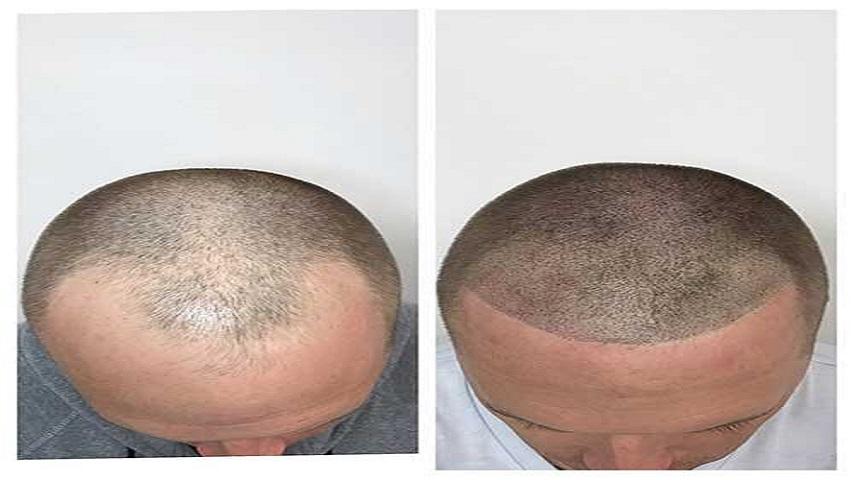Hair is more than just a style statement—it’s a reflection of your internal health. From texture and strength to shine and elasticity, the condition of your hair is largely influenced by one vital building block: protein. If you've ever wondered why protein treatments are so popular—or why your stylist keeps recommending them—this blog dives deep into the science of how protein works to repair and restore damaged hair.
Why Protein Matters for Hair Health
Hair is made up of keratin, a strong, fibrous protein produced in hair follicles. Keratin forms the structure of each hair strand, giving it strength, shape, and resilience. When your hair lacks adequate protein, it becomes weak, brittle, and prone to breakage.
Damage from heat styling, chemical treatments, harsh weather, and even daily wear and tear can deplete the protein in your hair. The result? Split ends, thinning, frizz, and dullness.
That’s where protein-based hair care comes in.
The Science of Hair Structure
Before understanding how protein helps, let’s briefly look at hair anatomy:
- Cuticle: The outermost layer made of overlapping scales. It protects the inner layers.
- Cortex: The thickest layer where keratin resides. It determines the strength, texture, and color of hair.
- Medulla: The innermost core (not present in all hair types).
When hair is damaged, the cuticle lifts or cracks, allowing moisture and protein to escape from the cortex. Reintroducing protein helps rebuild this inner structure, smoothing the cuticle and strengthening the strand.
How Protein Repairs Damaged Hair
Protein treatments work by filling in the gaps in the hair shaft where keratin has been lost. These treatments temporarily bond to the hair, reinforcing the structure and preventing further damage.
Here’s how it happens:
- Hydrolyzed proteins (small enough to penetrate the hair shaft) attach to damaged areas
- They create a protective barrier that strengthens the strand from within
- Over time, this reduces breakage, increases elasticity, and restores shine
Some common proteins used in treatments include:
- Keratin: The same protein hair is made of—ideal for intense repair
- Silk protein: Adds smoothness and moisture retention
- Wheat protein: Great for volume and strengthening
- Collagen: Improves elasticity and softness
Protein vs. Moisture: Finding the Right Balance
While protein is essential for strong hair, too much of it can cause stiffness and breakage. That’s why balancing protein and moisture is key.
- If your hair feels mushy or overly elastic: You likely need protein
- If it feels stiff or straw-like: You need more moisture
- If it breaks easily with no stretch: You might need both
Alternating between deep conditioning (moisture) and protein masks can help maintain a healthy balance.
Signs Your Hair Needs Protein
Not sure if your hair is protein-deficient? Watch for these warning signs:
- Excessive shedding or breakage
- Limp, lifeless hair with no volume
- Color fades quickly or doesn’t hold well
- Split ends and frizzy strands
- Hair feels overly soft, stretchy, or fragile when wet
A professional hair analysis or strand test can help confirm your needs.
Types of Protein Treatments
Depending on the level of damage, you can choose from:
- Light protein sprays: For regular use and mild repair
- Leave-in conditioners with protein: Ideal for daily strength support
- Reconstructive masks: Weekly or bi-weekly for moderate damage
- Intensive salon treatments: For chemically processed or severely damaged hair
Pro tip: Always follow protein treatments with a moisturizing conditioner to keep hair soft and manageable.
Nutrition Plays a Role Too
Topical products are important—but your diet also affects hair protein. Protein-rich foods like eggs, fish, dairy, legumes, and nuts support keratin production from within.
Also, don’t overlook nutrients that support protein synthesis:
- Biotin
- Iron
- Zinc
- Vitamin A & C
A balanced diet ensures your follicles produce stronger, healthier strands.
Long-Term Benefits of Protein Care
- Reduced breakage and split ends
- Improved hair thickness and resilience
- Better styling and heat resistance
- Enhanced shine and manageability
- Stronger color retention for dyed hair
When used wisely, protein transforms fragile, damaged hair into a healthy, vibrant crown of confidence.
Final Thoughts: Building Stronger Strands, One Treatment at a Time
Healthy hair starts with strong foundations—and that foundation is protein. Whether you’re recovering from damage or simply aiming to maintain lush locks, understanding the role of protein can guide you toward smarter hair care choices.
Instead of chasing temporary fixes, invest in the science-backed approach that truly restores. Because when your hair is healthy from the inside out, you don’t just look good—you feel empowered.
How Scalp Micropigmentation Can Be a Helpful Alternative to Hair Transplants
How PRP Therapy Can Help Reverse Hair Thinning and Boost Hair Growth
